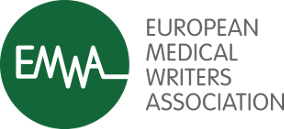Regulatory News - April 2019
“UK QPPV” and “UK PSMF” for no deal Brexit - The Medicines and Healthcare products Regulatory Agency (MHRA) published guidance on the qualified person responsible for pharmacovigilance (QPPV) including pharmacovigilance system master files (PSMF) for a no deal scenario of Brexit. If the UK leaves the EU on 29 March 2019 without a deal, the following legal obligations will apply to marketing authorisation holders (MAH) in the UK:
- To operate a pharmacovigilance system for UK authorised products.
- To have an appropriately qualified person responsible for pharmacovigilance (QPPV) that resides and operates in the UK and is responsible for the establishment and maintenance of the pharmacovigilance system for UK authorised products (“the UK QPPV”).
- To maintain and make available upon request a pharmacovigilance system master file (PSMF) that describes the pharmacovigilance system for UK authorised products (“the UK PSMF”). The UK PSMF must be located in, or accessible electronically from, the UK at the same site at which adverse reaction reports may be accessed.
New safety features for medicines sold in the EU against falsified medicines - As of 9 Feb 2019, most prescription medicines and some over-the-counter medicines for human use supplied in the European Union are required to have the following safety features: a unique identifier (a two-dimension barcode) and an anti-tampering device on their outer packaging. The anti-tampering device is a safety feature that shows whether the packaging has been opened or altered since it left the manufacturer, thereby ensuring that the content of the packaging is authentic.
These mandatory safety features are a key measure of the Falsified Medicines Directive which is part of the EU’s strategy to strengthen the security of the supply chain of medicines. The safety features are implemented through a delegated regulation that comes into application on 9 February 2019. It will apply in all EU/EEA Member States, except for Greece and Italy, who have until 2025 to update their already existing tracking systems.
The safety features will help protect European citizens against the threat of falsified medicines, which may contain ingredients, including active ingredients, which are of low quality or in the wrong dosage and could potentially put patients' health at risk. The unique identifier and the anti-tampering device on the packaging of the medicines will guarantee medicine authenticity for the benefit of patients, and will strengthen the security of the medicine supply chain, from manufacturers to distributors to pharmacies and hospitals.
Questions and answers: Article 31 pharmacovigilance referrals -The EMA published an update of the questions and answers on article 31 pharmacovigilance referrals. Questions and answers are being updated continuously, and will be marked by “New” or “Rev.” with the relevant date upon publication. This guidance addresses a number of questions which stakeholders, in particular marketing authorisation holders (MAHs), may have on an Article 31 referral resulting from the evaluation of data from pharmacovigilance activities. It provides an overview of the Agency's practical and operational aspects with regards to the handling of Article 31 pharmacovigilance referral procedures.
Questions and answers: Article 20 non-pharmacovigilance procedures - The EMA published an update of the questions and answers on article 20 non-pharmacovigilance procedures. Questions and answers are being updated continuously, and will be marked by “NEW” or “Rev.” with the relevant date upon application. This guidance document addresses a number of questions which stakeholders, in particular marketing authorisation holders (MAHs), may have on an Article 20 non-pharmacovigilance procedure. It provides an overview of the European Medicine Agency’s (the Agency) practical and operational aspects with regards to the handling of Article 20 non-pharmacovigilance procedures.

